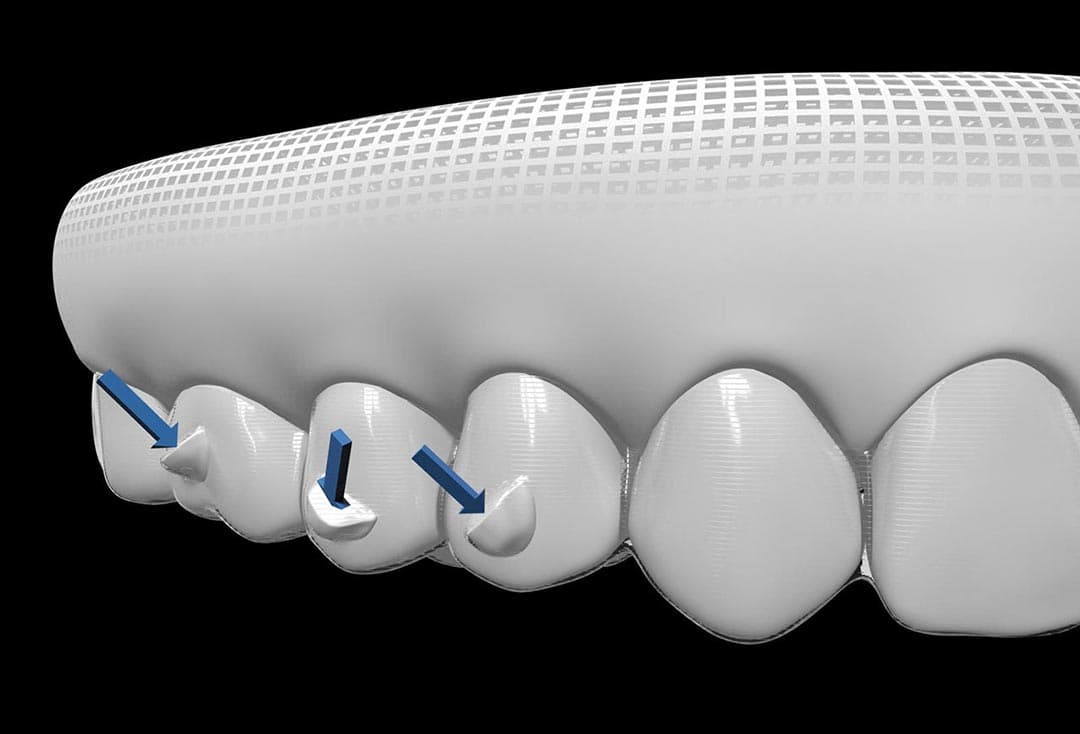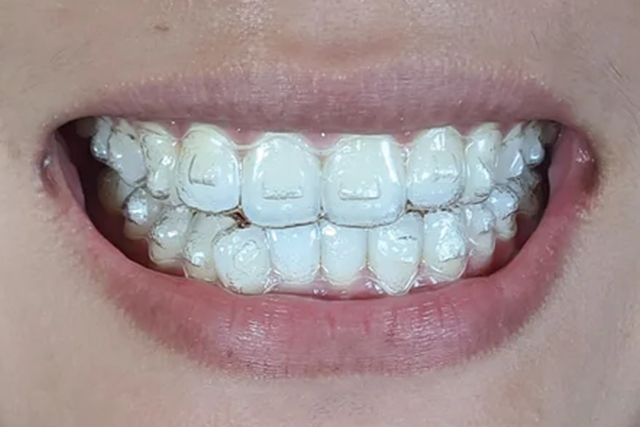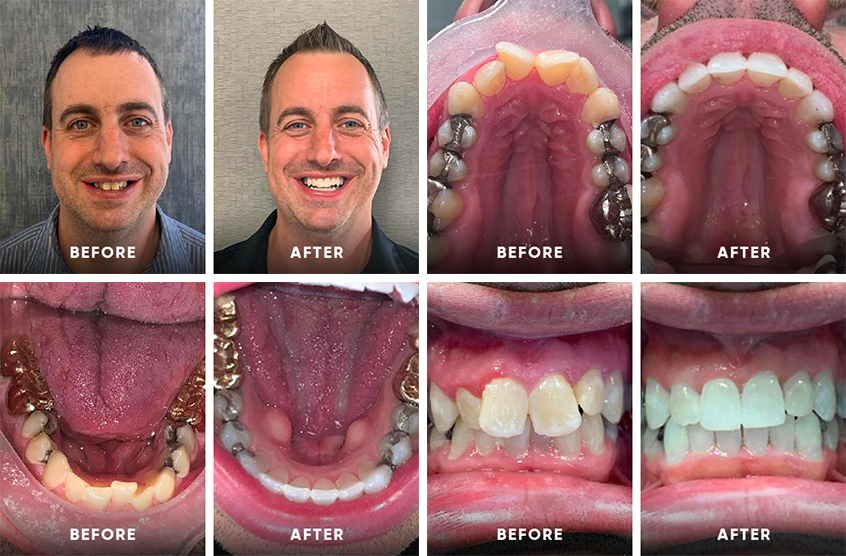Frequently Asked Questions Concerning Invisalign: Everything You Required to Know
Frequently Asked Questions Concerning Invisalign: Everything You Required to Know
Blog Article
Invisalign vs. Standard Braces: Which Option Is Right for You?
When thinking about orthodontic treatment, the option in between Invisalign and typical dental braces provides a number of essential variables that warrant careful analysis. Invisalign supplies a discreet alternative with detachable aligners, while standard dental braces give a more noticeable yet efficient service for severe misalignment. Each option includes distinctive advantages and downsides connected to appearances, convenience, treatment duration, and cost. Comprehending these subtleties is important for making an informed decision that aligns with your individual choices and lifestyle. The question remains: which choice will ideal satisfy your orthodontic needs and expectations?
Summary of Therapy Choices

On the other hand, conventional braces contain steel braces and wires that are bonded to the teeth. This technique uses constant pressure gradually to accomplish placement. While efficient for complicated orthodontic issues, traditional braces need regular sees for adjustments and can present difficulties in maintaining dental hygiene due to the trouble of cleaning up around wires and braces.
Both options have their benefits, and the option typically depends upon certain oral conditions, lifestyle preferences, and person conformity. Eventually, speaking with an orthodontic specialist is crucial for establishing one of the most suitable therapy strategy customized to individual requirements. Recognizing the subtleties of each choice can dramatically affect the general success of orthodontic treatment.
Visual Considerations
A significant aspect affecting the option between Invisalign and standard dental braces is the visual appeal each therapy offers. Invisalign aligners are crafted from clear plastic, making them practically unseen when used.
In contrast, standard braces include steel brackets and cables, which can be extra recognizable. While advancements in orthodontic innovation have actually led to the development of smaller brackets and colored elastics, standard dental braces still keep a more obvious account. For some people, the presence of dental braces might prevent them from looking for necessary treatment.
Ultimately, the selection between Invisalign and conventional dental braces may depend upon personal preferences relating to aesthetic appeals. Patients who prioritize discernment often favor Invisalign, while those who are much less worried concerning visibility may decide for conventional dental braces. Recognizing the visual effects of each choice is crucial for making an educated decision that aligns with one's way of life and choices.
Comfort and Convenience

In regards to benefit, Invisalign aligners are removable, making it possible for people to enjoy their favorite foods without limitation and maintain optimum oral health. Brushing and flossing are streamlined, as the aligners can be obtained during these regimens, whereas conventional dental braces need careful maneuvering around brackets and cables.
Furthermore, Invisalign's modern system enables fewer orthodontic check outs. Clients typically receive several sets of aligners simultaneously, which can enhance the treatment process and lower time invested in the orthodontist's chair. On the other hand, conventional dental braces necessitate routine changes, making them less hassle-free for those with busy schedules. Invisalign. Overall, the comfort and comfort of Invisalign make it an enticing selection for several people looking for orthodontic treatment.
Treatment Duration and Effectiveness
While both Invisalign and conventional dental braces are effective in dealing with dental misalignments, the period of therapy can differ dramatically between the two choices. Typically, Invisalign therapy can take anywhere from 12 to 18 months, relying on the intricacy of the case. The clear aligners function by slowly changing teeth into their desired positions, and normal follow-ups with an orthodontist help make sure progression remains on track.
In contrast, traditional braces frequently need a longer commitment, typically varying from 18 months to three years. This is due to their set nature and the use of brackets and wires, which can be extra reliable for complex cases and extreme imbalances (Invisalign). The treatment efficiency of conventional dental braces is well-documented, as they enable precise changes and higher control over tooth activity
Ultimately, the choice between Invisalign and traditional braces might rest on both the anticipated treatment duration and the particular oral concerns handy. Consulting with an orthodontist is crucial, as they can give tailored suggestions continue reading this based upon private needs, making certain the selected method lines up with preferred durations and results.
Expense Comparison and Insurance Choices
Expense plays a substantial role in the decision-making process for individuals considering orthodontic treatment, whether selecting Invisalign or typical dental braces. On standard, the expense of Invisalign arrays from $3,000 to $8,000, while standard braces commonly cost in between $2,000 and $6,000. Aspects influencing these prices consist of the intricacy of the case, the duration of therapy, and geographical place.
Several dental insurance coverage strategies offer partial coverage for orthodontic therapies, however the specifics can differ widely. Typically, traditional braces might be a lot more frequently Look At This covered by insurance policy strategies compared to Invisalign, which some insurance firms categorize as an aesthetic treatment.
Additionally, several orthodontic techniques use flexible layaway plan, making both treatment choices more easily accessible. Individuals should make inquiries concerning possible funding alternatives and discounts for upfront payments. Evaluating the complete expense, consisting of insurance advantages and layaway plan, is vital for making an educated choice that straightens with both visual choices and spending plan factors to consider.

Final Thought
In recap, the choice in between Invisalign and typical dental braces depends upon multiple aspects, including aesthetic preferences, comfort, therapy period, and price. Invisalign offers a very discreet, detachable choice that promotes oral health and dietary flexibility, while conventional dental braces might be better for complicated dental concerns and commonly come with a reduced cost point. Inevitably, consultation with an orthodontist is important to assess private situations and establish one of the most suitable therapy option for achieving optimal oral alignment.
When considering orthodontic treatment, the selection in between Invisalign and traditional braces provides a number of important aspects that merit careful analysis.Comparing Invisalign and conventional braces exposes distinctive therapy choices for orthodontic improvement.While both Invisalign and conventional braces are efficient in correcting dental imbalances, the duration of therapy can differ significantly in between the two choices.Cost plays a significant function in the decision-making procedure for people taking into consideration orthodontic therapy, whether choosing for Invisalign or conventional braces.In summary, the option between Invisalign and conventional dental braces hinges on several aspects, consisting of visual preferences, comfort, treatment period, and cost.
Report this page